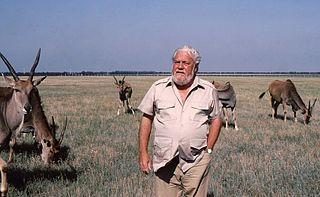
Gerald Malcolm Durrell, was a British naturalist, writer, zookeeper, conservationist, and television presenter. He founded the Durrell Wildlife Conservation Trust and the Jersey Zoo on the Channel Island of Jersey in 1959. He wrote approximately forty books, mainly about his life as an animal collector and enthusiast, the most famous being My Family and Other Animals (1956). Those memoirs of his family's years living in Greece were adapted into two television series and one television film. He was the youngest brother of novelist Lawrence Durrell.
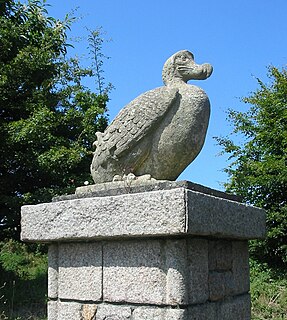
Jersey Zoo is a zoological park established in 1959 on the island of Jersey in the English Channel by naturalist and writer Gerald Durrell (1925–1995). It is operated by the Durrell Wildlife Conservation Trust. It has approximately 169,000 visitors per year; visitor numbers tend to vary with the tourist trade to Jersey.

Durrell Wildlife Conservation Trust is a conservation organization with a mission to save species from extinction.

The ecological restoration of islands, or island restoration, is the application of the principles of ecological restoration to islands and island groups. Islands, due to their isolation, are home to many of the world's endemic species, as well as important breeding grounds for seabirds and some marine mammals. Their ecosystems are also very vulnerable to human disturbance and particularly to introduced species, due to their small size. Island groups such as New Zealand and Hawaii have undergone substantial extinctions and losses of habitat. Since the 1950s several organisations and government agencies around the world have worked to restore islands to their original states; New Zealand has used them to hold natural populations of species that would otherwise be unable to survive in the wild. The principal components of island restoration are the removal of introduced species and the reintroduction of native species.

The echo parakeet is a species of parrot endemic to the Mascarene Islands of Mauritius and formerly Réunion. It is the only living native parrot of the Mascarene Islands; all others have become extinct due to human activity. Two subspecies have been recognised, the extinct Réunion parakeet and the living echo parakeet, sometimes known as the Mauritius parakeet. The relationship between the two populations was historically unclear, but a 2015 DNA study determined them to be subspecies of the same species by comparing the DNA of echo parakeets with a single skin thought to be from a Réunion parakeet, but it has also been suggested they did not constitute different subspecies. As it was named first, the binomial name of the Réunion parakeet is used for the species; the Réunion subspecies thereby became P. eques eques, while the Mauritius subspecies became P. eques echo. Their closest relative was the extinct Newton's parakeet of Rodrigues, and the three are grouped among the subspecies of the rose-ringed parakeet of Asia and Africa.
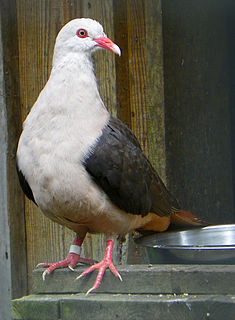
The pink pigeon is a species of pigeon in the family Columbidae endemic to Mauritius. The pink pigeon nearly became extinct in the 1970s and the 1990s and is still very rare. It is the only Mascarene pigeon that has not gone extinct. It was on the brink of extinction in 1991 when only 10 individuals remained, but its numbers have increased due to the efforts of the Durrell Wildlife Conservation Trust since 1977. While the population remains at below 500 birds as of 2011, the IUCN downlisted the species from Critically endangered to Endangered on the IUCN Red List in 2000, and then downlisted it again to Vulnerable in 2018.
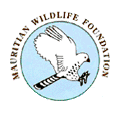
The Mauritian Wildlife Foundation (MWF) is a non-governmental, non-profit conservation agency working in Mauritius to save threatened endemic local flora and fauna.
The Gerald Durrell Endemic Wildlife Sanctuary is an animal sanctuary founded in 1984, in Western Mauritius. It is an area closed off to the public, in the Black River Gorge region, which is densely forested, and is used for breeding rare, endemic Mauritian species. Among the endangered species in the sanctuary is the Mauritius kestrel, once the rarest bird in the world with only 4 members left. It has been successfully bred and the population has now reached the capacity of Mauritius.

The broad-billed parrot or raven parrot is a large extinct parrot in the family Psittaculidae. It was endemic to the Mascarene island of Mauritius in the Indian Ocean east of Madagascar. It is unclear what other species it is most closely related to, but it has been classified as a member of the tribe Psittaculini, along with other Mascarene parrots. It had similarities with the Rodrigues parrot, and may have been closely related.

The Mauritius sheldgoose, also known as the Mauritius shelduck, is an extinct species of sheldgoose that was endemic to the island of Mauritius. While geese were mentioned by visitors to Mauritius in the 17th century, few details were provided by these accounts. In 1893, a carpometacarpus wing-bone and a pelvis from the Mare aux Songes swamp were used to name a new species of comb duck, Sarcidiornis mauritianus. These bones were connected to the contemporary accounts of geese and later determined to belong to a species related to the Egyptian goose, and placed in the sheldgoose genus Alopochen. The Mauritius and Réunion sheldgoose may have descended from Egyptian geese that colonised the Mascarene islands.

Leiolopisma telfairii, also known commonly as the Round Island ground skink, the Round Island skink, and Telfair's skink, is a species of lizard in the family Scincidae. The species is endemic to Round Island, one of the islands of Mauritius.

The Mauritius kestrel is a bird of prey from the family Falconidae endemic to the forests of Mauritius, where it is restricted to the southwestern plateau's forests, cliffs, and ravines. It is the most distinct of the Indian Ocean kestrels. It colonized its island home to evolve into a distinct species probably during the Gelasian . It is the most distant living species among the western Indian Ocean kestrels.

Bojer's skink is a small species of skink, a lizard in the family Scincidae. The species is endemic to Mauritius including some of its offshore islands.
The Islets of Mauritius includes nearly a hundred tiny islets and rocks scattered around the coast of Mauritius as well as Rodrigues.
The wildlife of Mauritius consists of its flora and fauna. Mauritius is located in the Indian Ocean to the east of Madagascar. Due to its isolation, it has a relatively low diversity of wildlife; however, a high proportion of these are endemic species occurring nowhere else in the world. Many of these are now threatened with extinction because of human activities including habitat destruction and the introduction of non-native species. Some have already become extinct, most famously the dodo which disappeared in the 17th century.
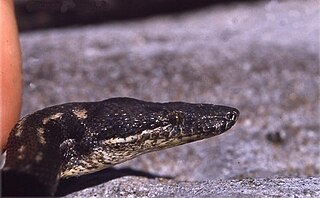
The Round Island boa, also known as the Round Island keel-scaled boa and the Round Island ground boa, is a species of nonvenomous snake in the monotypic genus Casarea in the family Bolyeriidae. The species is endemic to Round Island, Mauritius. No subspecies are currently recognized.

The saddle-backed Mauritius giant tortoise is an extinct species of giant tortoise in the family Testudinidae. It was endemic to Mauritius. The last records of this tortoise date to the early 18th century.
Carl Gwynfe Jones, MBE is a Welsh conservation biologist, who has been employed by Durrell Wildlife Conservation Trust since 1985, and a founding member (1984) and current scientific director of Mauritian Wildlife Foundation (MWF). Additionally he is Chief Scientist at Durrell Wildlife Conservation Trust, and an honorary professor in ecology and conservation biology at the University of East Anglia. Often outspoken on the importance of knowing your species and using intuition, empathy and practical knowledge over dogmatic education, Jones is best known for his work in recovering the Mauritius kestrel from just four individuals in 1974, to an estimated 400. Working in the Mascarene Islands since 1979, Jones has led five successful bird restoration projects where the starting population has numbered less than 12 individuals; as a consequence Mauritius has averted more bird extinctions than any other country. Jones has pioneered the use of ecological or taxon replacements to fill the ecological roles of extinct animals and successfully restored levels of endemic vegetation to previously denuded islets. Jones' work has been highlighted in Douglas Adams and Mark Carwardine's 1990 radio documentary Last Chance to See, along with its accompanying book, as well as David Quammen's 1996 book The Song of the Dodo: Island Biogeography in an Age of Extinctions.

Ile aux Aigrettes is an islet off the south-east coast of Mauritius. It functions as a nature reserve and a scientific research station. It is also a popular visitors attraction - both for tourists and for Mauritians.

Diospyros egrettarum is a species of tree endemic to Mauritius and was once a dominant species throughout dry and coastal forests. Due to harvests for timber and firewood in the past the species was reduced to fewer than 10 individuals on the main land. The only viable population remained on Île aux Aigrettes, a coral island off the east coast, where it was able to survive thanks to protective measures, such as the eradication of exotic plants and rats. The tree is named after this Island.
















